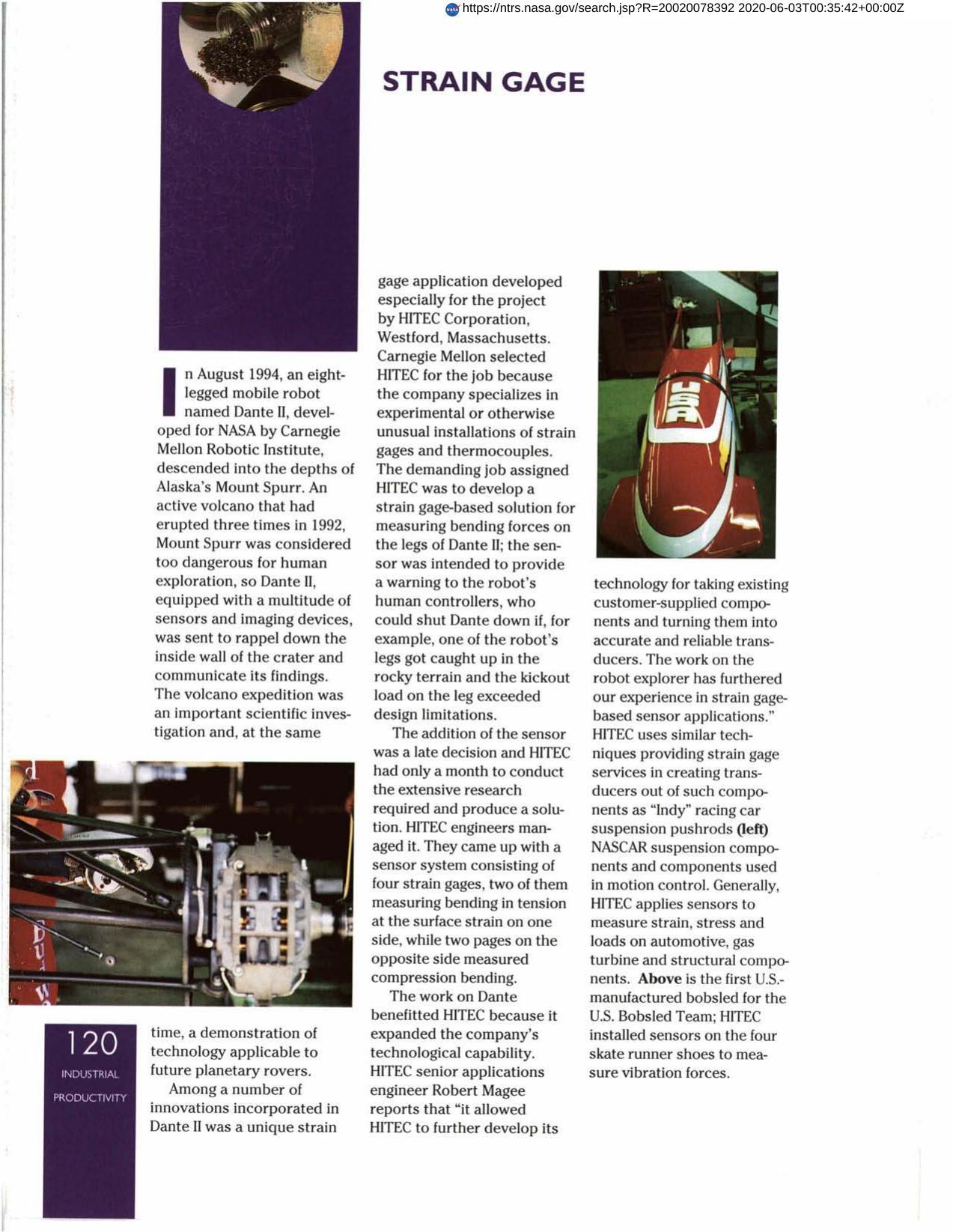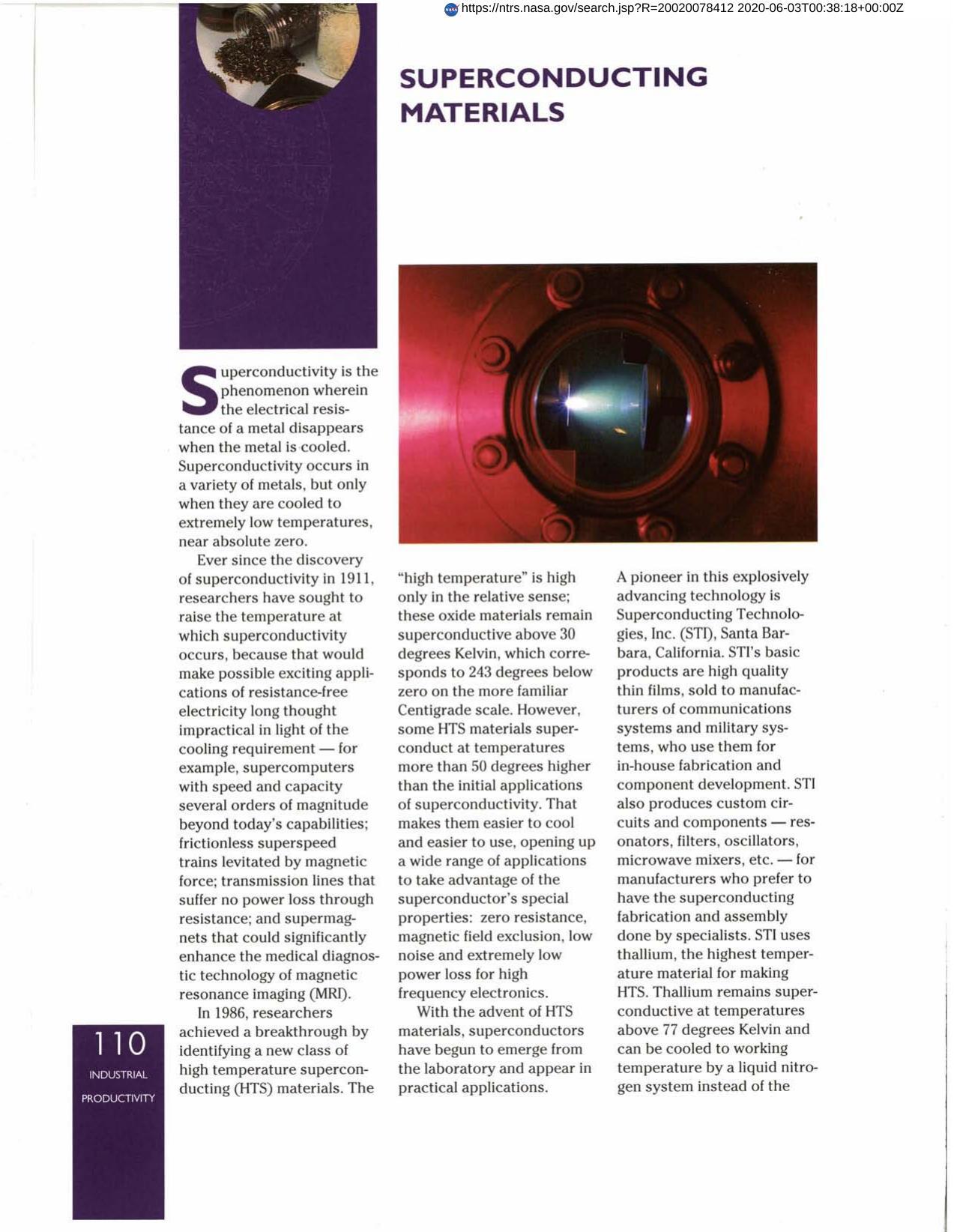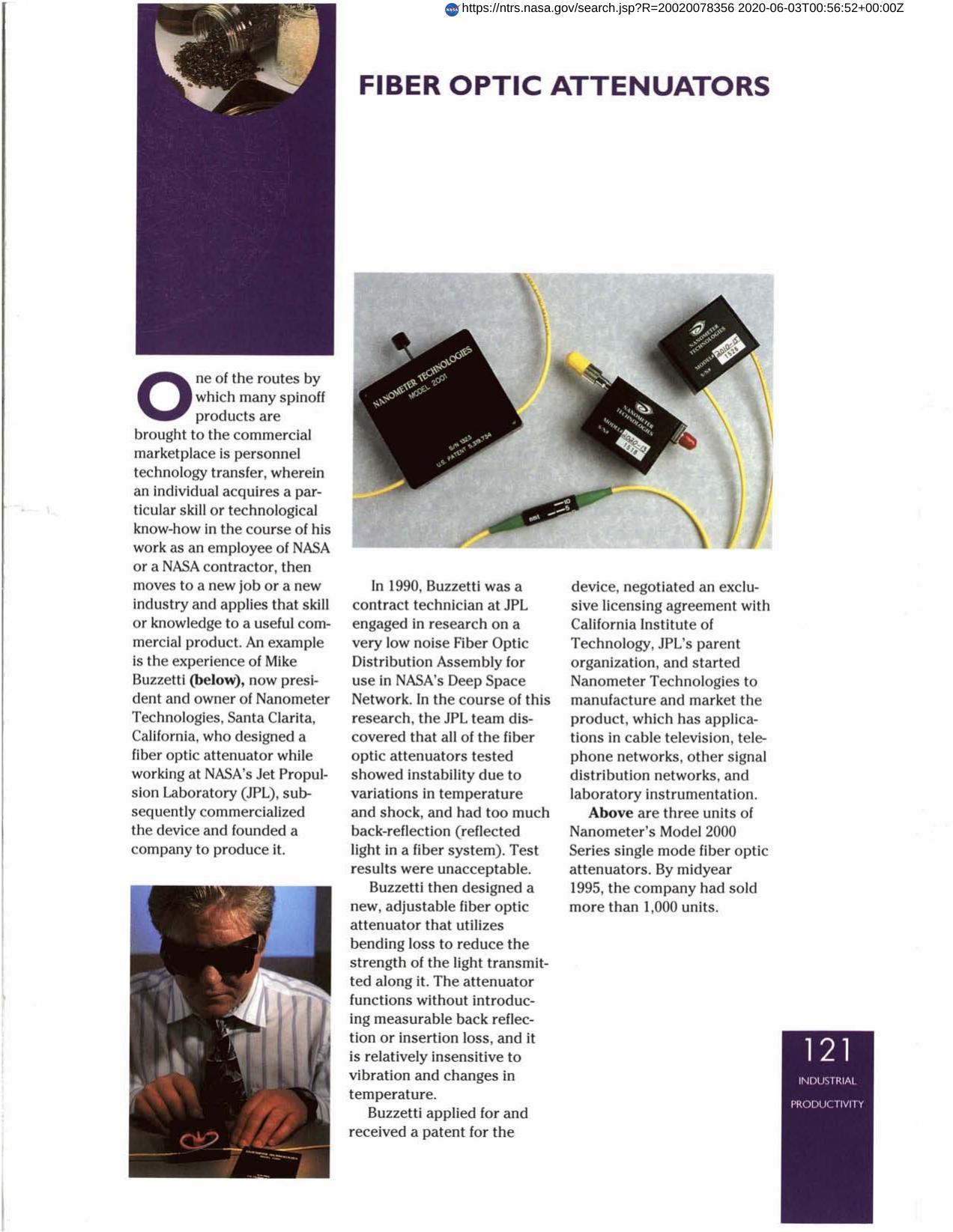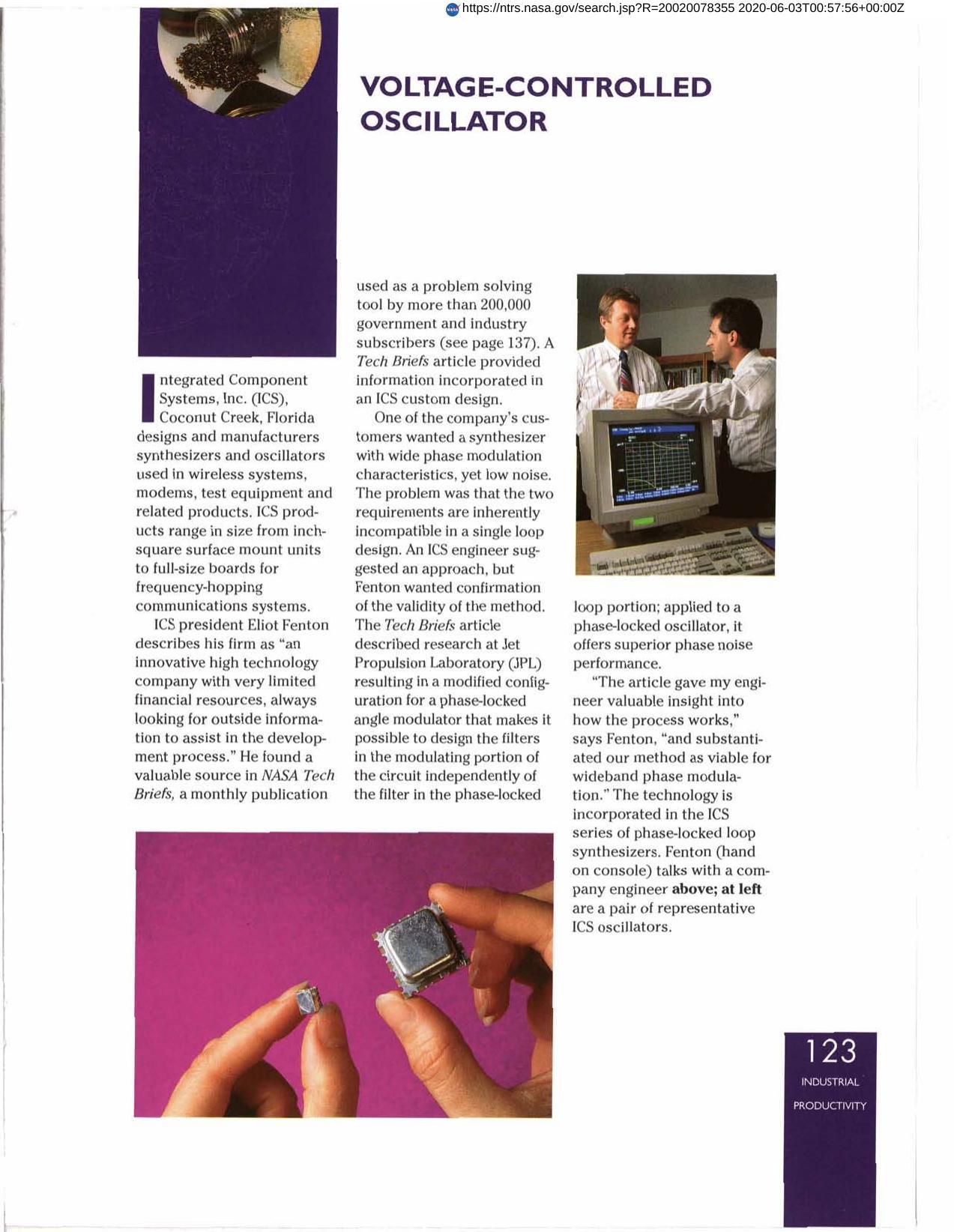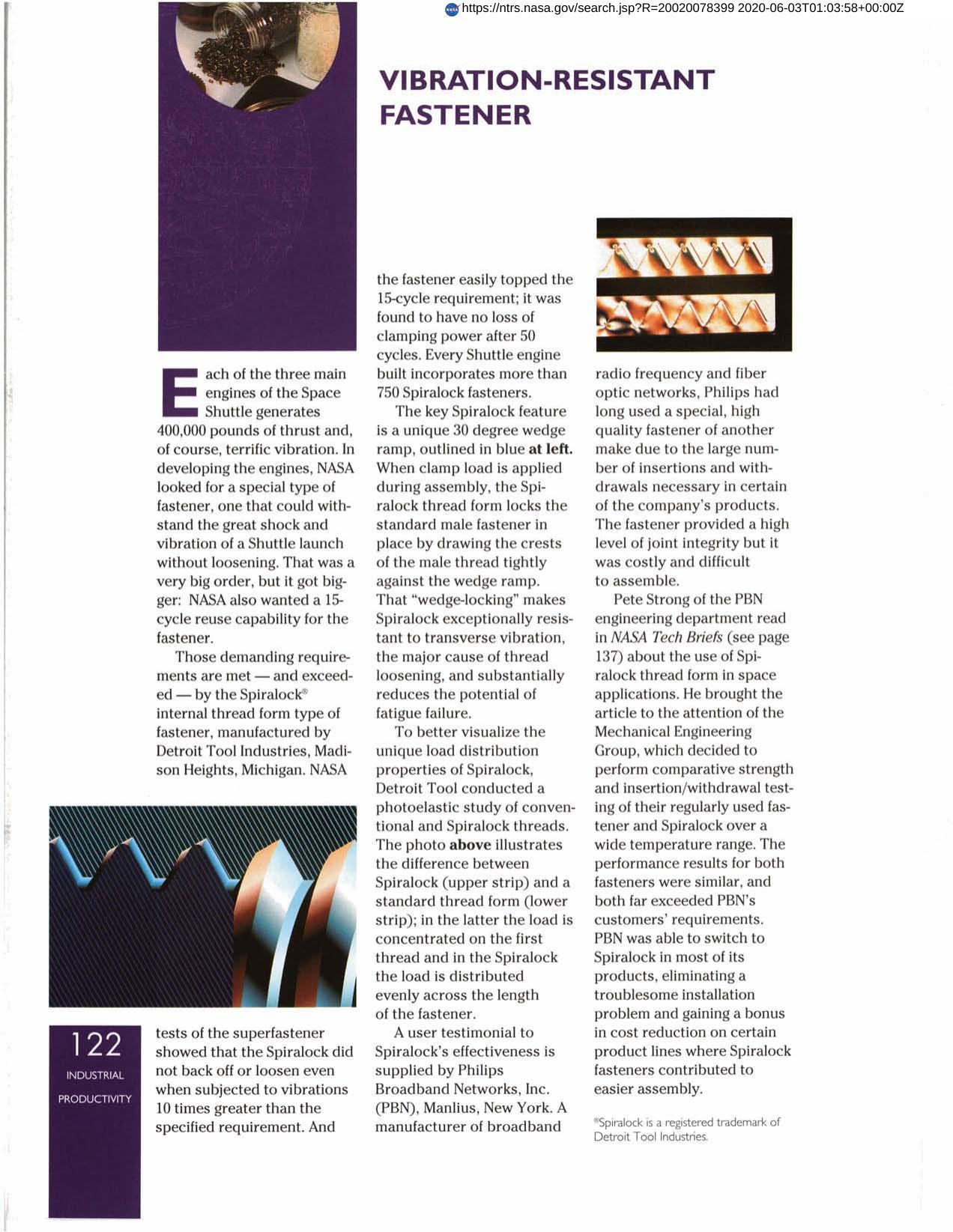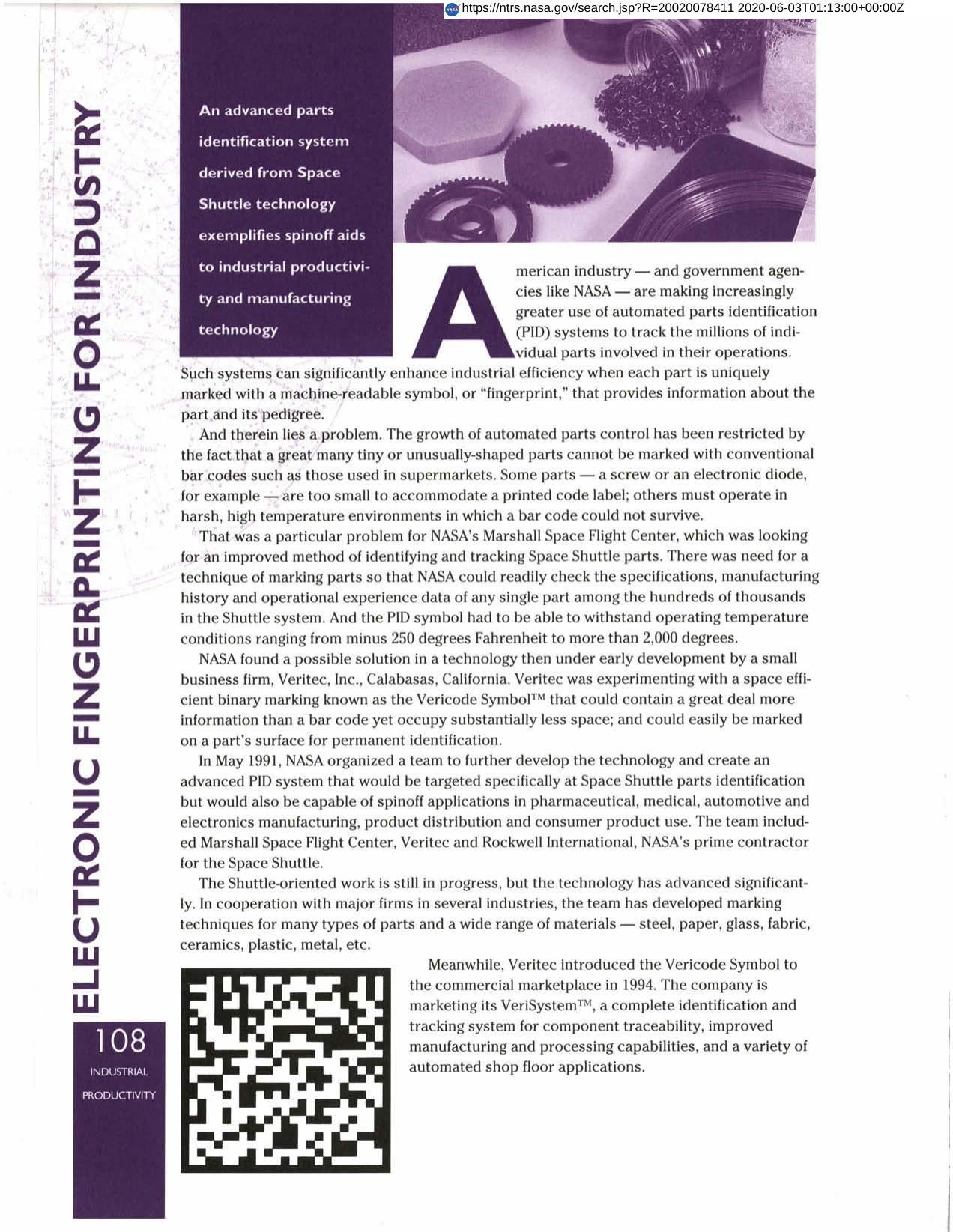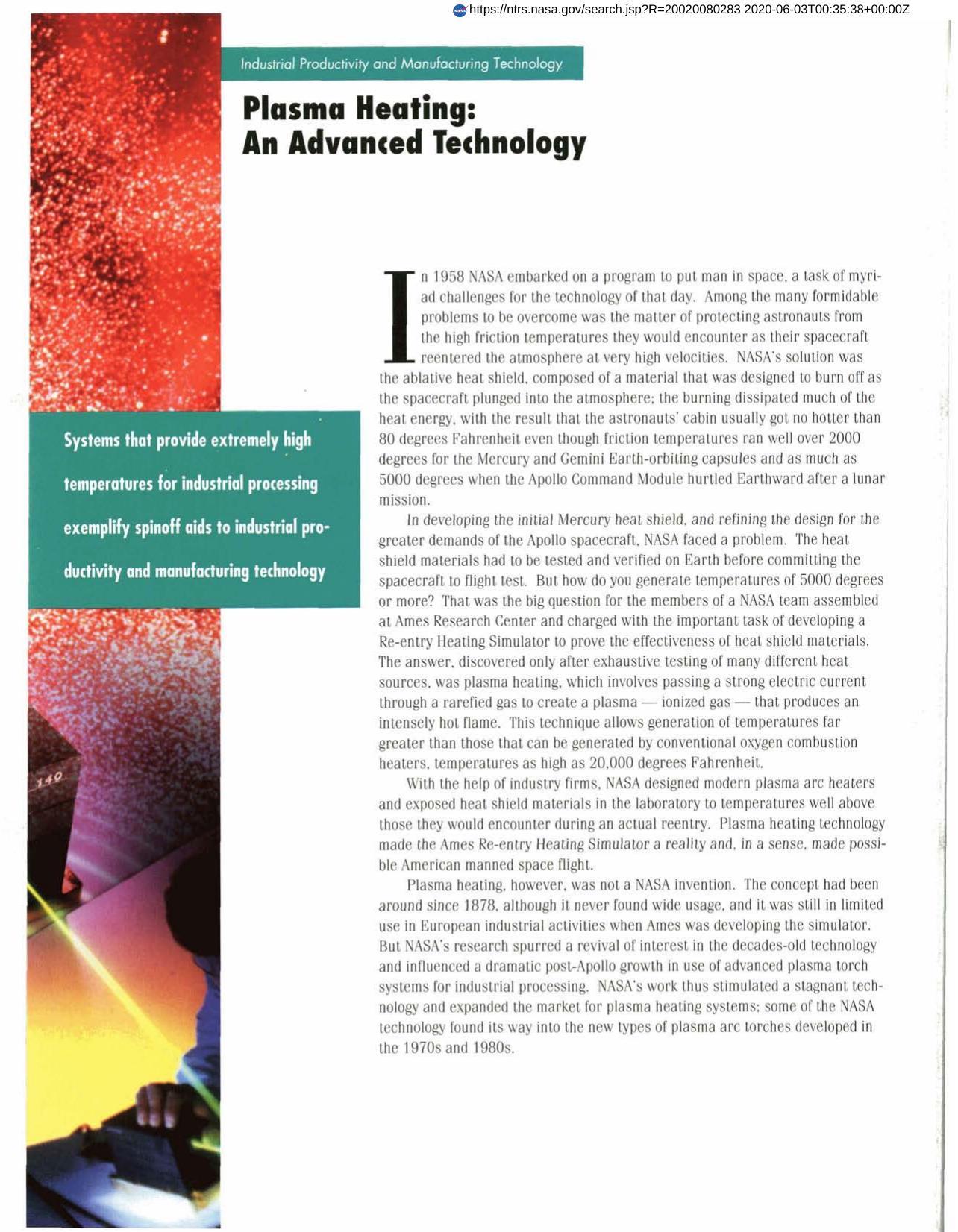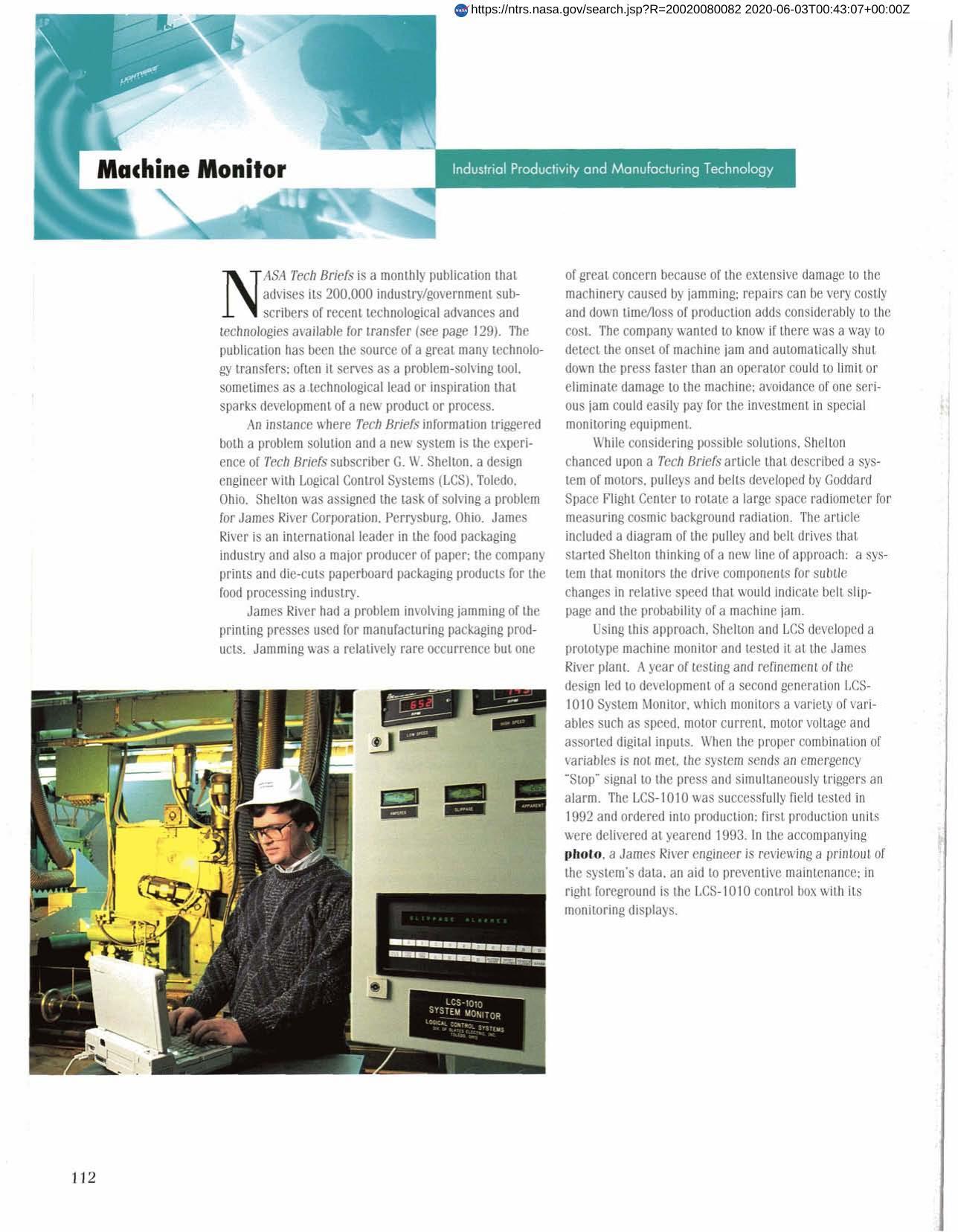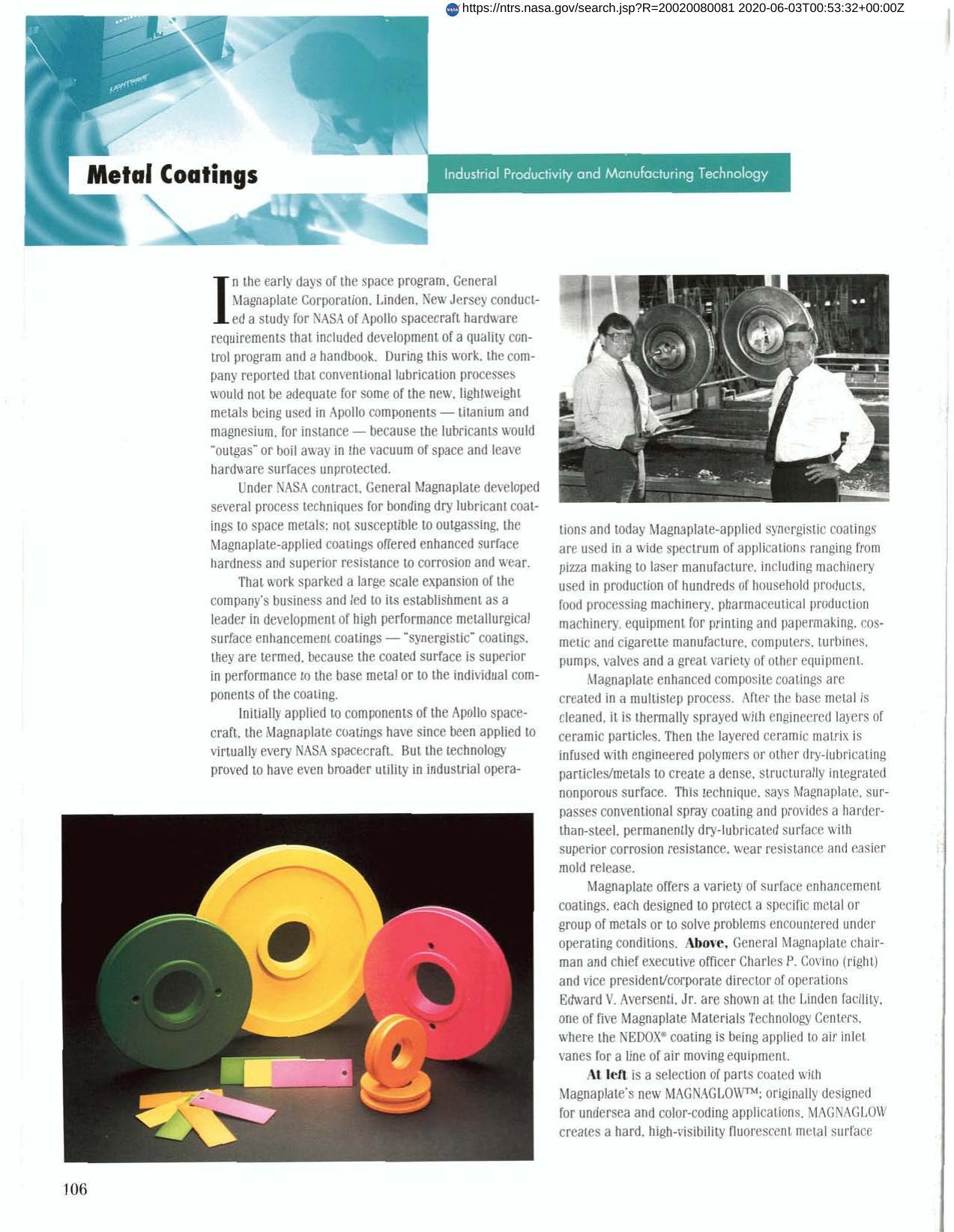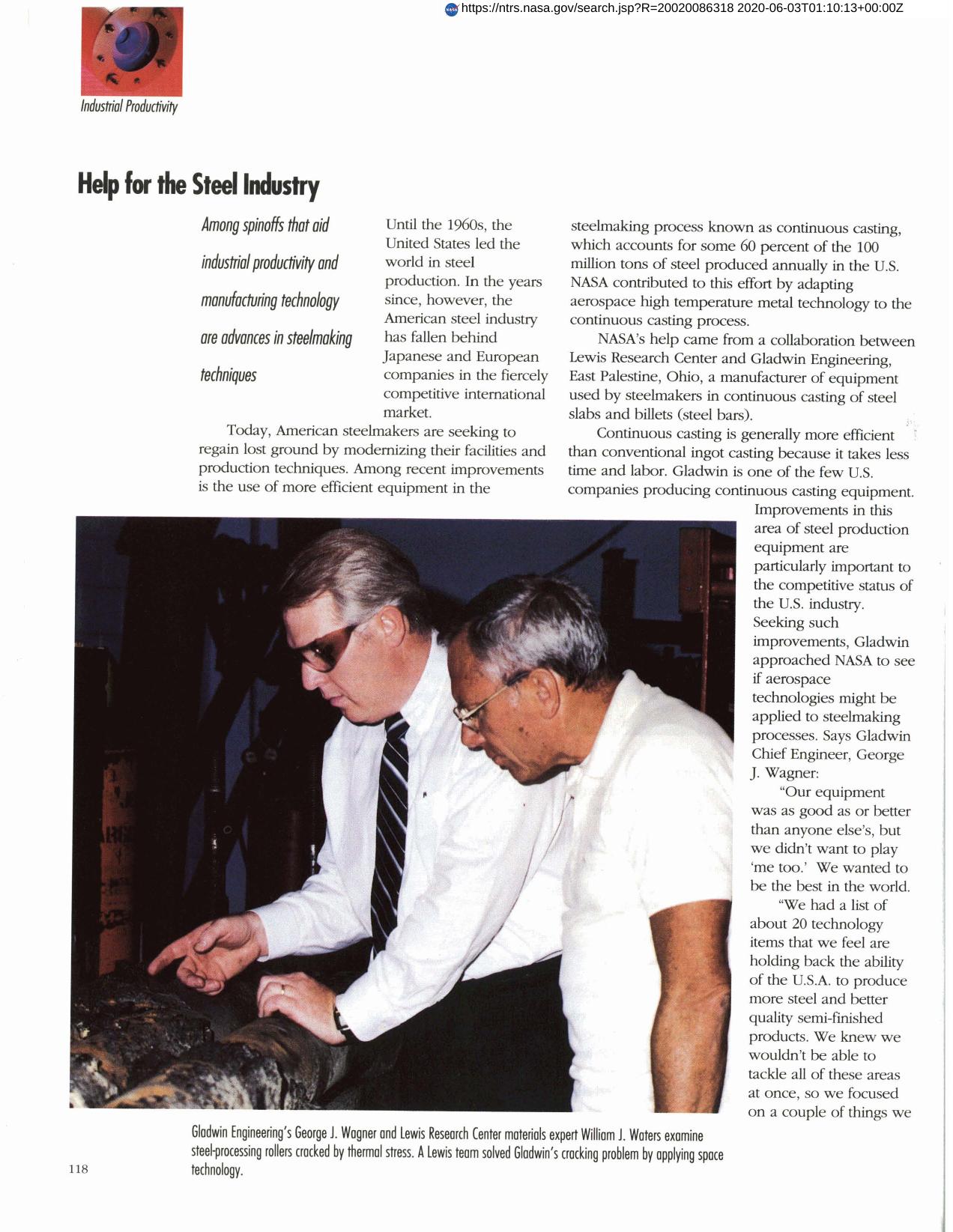
Help for the Steel Industry
A collaboration between NASA Lewis Research Center (LRC) and Gladwin Engineering resulted in the adaptation of aerospace high temperature metal technology to the continuous casting of steel. The continuous process is more efficient because it takes less time and labor. A high temperature material, once used on the X-15 research plane, was applied to metal rollers by a LRC developed spraying technique. Lewis Research Center also supplied mold prototype of metal composites, reducing erosion and promoting thermal conductivity. Rollers that previously cracked due to thermal fatigue, lasted longer. Gladwin's sales have increased, and additional NASA-developed innovations are anticipated.
Full article: http://hdl.handle.net/hdl:2060/20020086318

Help for the Steel Industry

Help for the Steel Industry




